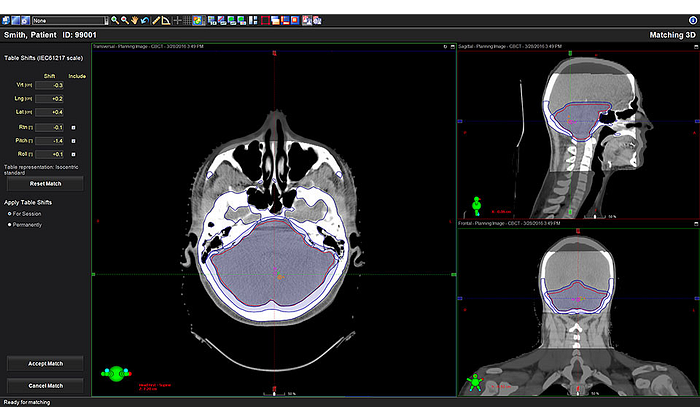
Carl J. Rossi, Jr., MD, Medical Director, Scripps Proton Therapy Center, San Diego, CA
In-room cone-beam computed tomography (CBCT) has made adaptive radiotherapy much more effective-and efficient- because we no longer have to rely upon arbitrary time periods for doing a repeat diagnostic CT scan. Instead, we can now customize when a patient receives a diagnostic CT scan based on his/her CBCT "trigger" scan, and we can more quickly respond to the changing clinical situation.
Consequently, how often we use adaptive radiotherapy depends on what we are treating and the speed of treatment response. For example, lung cancer tumors tend to respond rapidly, so we may do adaptive radiotherapy once a week or more frequently depending on how quickly a patient's condition changes.
Adaptive radiotherapy can help most patients on some level – even those with tumors that tend to be in parts of the body with a lot of normal organ motion due to respiration or digestion. With the integrated suite of delivery system, software tools, and information management, we now have more tools than ever to implement personalized adaptive patient-specific plans.
Challenges
Technological developments has been the biggest barrier to performing adaptive radiotherapy effectively. The first step in overcoming this barrier has been Varian's development of CBCT for adaptive radiotherapy, which has greatly advanced the entire field of radiation oncology. The second step has been the development of pencil-beam scanning and more powerful computer systems, creating a treatment delivery system that allows clinicians to take advantage of the improvements in CBCT to modify treatment plans in near real-time. The third step is the implementation of adaptive workflows in realistic clinical conditions through Varian's unique integrated software suite.
In the future, we will be able to change treatment plans in real-time, delivering the modified treatment on the table within minutes -- rather than a day or two. We are getting closer to this goal, but to reach it we will need to develop faster calculations algorithms, quality assurance procedures, and physician pre-approval of adapted plans that can quickly and accurately produce a new plan.
Partnering with Varian to Advance Adaptive Radiotherapy
One of the reasons I came to Scripps was because I wanted to work at a facility with the most advanced technology in proton therapy, and I knew that Varian was committed to developing proton therapy technology and had the resources - and the desire - to do so. Varian remains an excellent and essential technological partner, supporting the development of proton therapy at Scripps and performing proton therapy research and development.